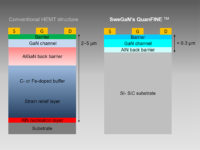Blog Posting
First 3GPP-compliant 5G NR Sub-6 GHz OTA Call with a Mobile Device
Follows on the heals of First 3GPP-compliant 5G NR mmWave OTA Call with a Mobile Device
Read More
Comsol 5.4 Enhances RF Capabilities
Extended Materials & RF Part Libraries, Far-Field Analysis Functions
Read More








